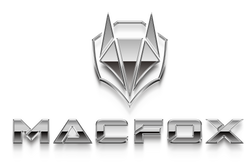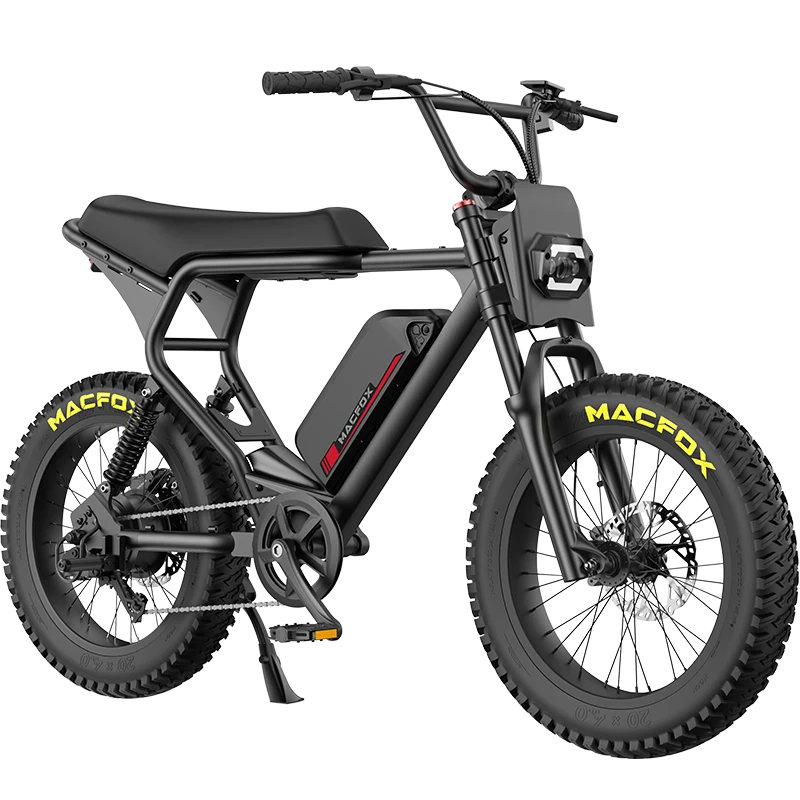E-bike hub motor jerking is a significant concern for many riders, marked by erratic surges, stuttering, or inconsistent power delivery. This issue can disrupt the riding experience, making the bike feel unstable and unsafe, especially under challenging conditions like heavy traffic or rough terrain. In this article, we explore the causes behind e-bike hub motor jerking, methods to diagnose these issues, and practical solutions to rectify them.
Understanding E-Bike Hub Motor Jerking
E-bike hub motor jerking is an abnormal behavior that can be described as stuttering or erratic motor response, often leading to sudden drops or surges in power. These disruptions are particularly concerning, as they can severely compromise the rider's control, especially during sudden accelerations or on steep inclines.
Hub motors are typically located within either the front or rear wheel of an e-bike. These motors serve as the direct power source, either augmenting or completely replacing pedal power. The motor’s functionality relies on a complex interplay of electrical components. A battery provides the energy, which is converted by a controller to energize the motor windings via alternating current (AC). Most brushless hub motors use Hall sensors to ensure smooth operation, offering crucial feedback on the rotor's position for efficient power delivery.
However, motor jerking is rarely caused by a motor fault alone. Instead, it is often a symptom of a failure or malfunction within the larger e-bike system. This is why diagnosing motor jerking issues requires a holistic approach, taking into account not only the motor itself but also the controller, battery, throttle, and other related components.
Root Causes of Jerking: A Component-by-Component Analysis

Understanding the root causes of e-bike hub motor jerking involves a detailed examination of the components responsible for motor function.
1. Controller Issues
The controller acts as the central hub of the e-bike's electrical system. It manages the flow of power from the battery to the motor. Faults within the controller can cause jerking by disrupting power regulation.
Internal Hardware Failures
The controller's internal components, such as MOSFETs (Metal-Oxide-Semiconductor Field-Effect Transistors), can fail, leading to erratic motor behavior. For instance, a blown MOSFET might cause the motor to jerk or kick before completely cutting out.
Control Logic Issues
Some controllers use a voltage throttle to adjust speed. This method can lead to sudden power surges or decelerations, contributing to jerking. A torque command or amperage throttle method, however, provides smoother control, as it adjusts the motor’s output proportionally to pedal force. Jerking caused by abrupt throttle response can often be traced back to controller design rather than hardware failure.
Overheating
Excessive power draw or inadequate ventilation can overheat the controller, resulting in thermal stress and erratic performance. Controllers that overheat might enter protective shutdown modes or deliver inconsistent power, contributing to jerking.
2. Battery and Power System Issues
The battery is the lifeblood of the e-bike, but subtle issues within the power system can also contribute to jerking.
Voltage Sag
When the battery experiences voltage sag under load, such as during rapid acceleration or steep climbs, it can cause power fluctuations that result in jerking. Aging batteries or those with high internal resistance are especially prone to this issue.
Faulty Cells and Loose Connections
Aging or damaged battery cells can trigger Low Voltage Cutoff (LVC), causing jerking, particularly under load. Additionally, any loose or corroded battery connections can disrupt the flow of power, leading to intermittent motor behavior.
3. Throttle Malfunctions
The throttle is a critical component that directly influences motor power delivery. Any malfunction here can send erratic signals to the controller, causing jerking.
Signal Disruption
A malfunctioning throttle, whether due to internal degradation or wiring issues, can cause the motor to react unpredictably. This might occur if the throttle is stuck or sends inconsistent signals, especially if the throttle fails to return smoothly to the off position.
Wiring Issues
Damaged wires connecting the throttle to the controller can also cause interruptions in power delivery, leading to jerking or power loss.
4. Pedal Assist System (PAS) and Torque Sensor Problems
The Pedal Assist System (PAS) and torque sensors are responsible for providing motor assistance based on pedaling force. Malfunctions in these systems can lead to jerky power delivery.
Sensor Failures
Magnetic discs, alignment issues, or faulty sensors within the PAS system can send incorrect or intermittent signals to the controller. This causes the motor to engage irregularly or inconsistently, resulting in jerking.
Torque Sensor Calibration
Incorrect calibration or damage to the torque sensor, commonly found in mid-drive e-bikes, can result in jerky acceleration. Accurate sensor calibration is crucial for smooth motor function, and issues with this system can directly lead to erratic power output.
5. Hall Sensor Failures
The Hall sensors provide essential feedback to the controller about the rotor’s position. If these sensors fail, the motor may struggle to start or exhibit jerky behavior, particularly at low speeds.
Connection Issues
Loose, damaged, or incorrectly assigned Hall sensor wires can cause the motor to stutter or even fail to engage properly. In many cases, reconnecting or replacing faulty Hall sensors can resolve jerking issues.
6. Phase Wire Issues
Phase wires carry power from the controller to the motor. Any disruption in these wires can directly lead to motor jerking.
Wire Damage
Loose, corroded, or damaged phase wires can result in imbalanced power delivery, causing the motor to stutter or cut out completely. Issues such as frayed wires or broken connections, especially near the hub axle, are common causes of jerking.
7. Internal Gearing Problems (Geared Hub Motors)
For geared hub motors, internal mechanical issues can contribute to jerking.
Stripped Gears and Bearings
Over time, the gears and bearings inside geared hub motors may wear down or become damaged. This results in jerky movements, especially under load, as the motor struggles to engage the gears properly.
8. Brake Sensor Malfunctions
Brake sensors are designed to cut power to the motor when the brakes are applied. Malfunctions in these sensors can cause the motor to unexpectedly cut out, leading to jerking.
Sensor Misalignment
A stuck or misaligned brake sensor can continuously signal to the controller that the brakes are engaged, causing the motor to cut out intermittently.
9. Environmental and Usage Factors
External factors like overheating, heavy loads, or extreme temperatures can exacerbate jerking. Aggressive riding habits, such as rapid acceleration or steep hill climbs, place undue stress on the motor and controller, potentially leading to jerking under strain.
Recommended: Macfox Electric Bike Modification: Enhance Performance, Style, and Comfort
Diagnostic Methodologies for E-Bike Hub Motor Jerking

Effective diagnosis of motor jerking involves a systematic approach, combining visual inspections, electrical testing, and software diagnostics.
Initial Visual Inspection and Basic Checks
Start by visually inspecting the battery charge, wiring connections, throttle, and brake sensors. Often, jerking issues are caused by loose connections or damaged wires that can be easily rectified.
Electrical Testing with a Multimeter
Use a multimeter to test the battery voltage under load and the throttle's voltage output. This allows for the identification of faulty sensors, irregular voltage levels, and poor connections.
Software Diagnostics and Error Codes
Many e-bike systems display error codes that indicate specific issues. Consult the bike’s manual or the manufacturer’s software for error code interpretation.
Mechanical Inspection and Spin Tests
For geared hub motors, perform a manual wheel spin test to check for unusual resistance or noise, which may indicate issues with the internal gearing or bearings.
Advanced Diagnostic Tools
For complex or intermittent issues, consider using specialized e-bike motor testers or diagnostic software to pinpoint specific problems, especially when dealing with advanced systems.
Solutions and Repair Strategies
Once the root cause of jerking has been identified, several repair strategies can be implemented:
Addressing Electrical Connection Issues
Clean connectors, secure wiring, and repair any damaged wires. Soldering may be necessary for broken wires, while applying dielectric grease can help prevent future corrosion.
Controller-Specific Repairs and Adjustments
If controller issues are identified, consider updating the firmware or replacing defective components like MOSFETs. Upgrading to a more advanced controller that uses torque control can also help mitigate jerking.
Battery and Power System Solutions
Ensure the battery is in good condition and check for voltage sag. If necessary, replace weak cells or even the entire battery pack.
Throttle and PAS/Torque Sensor Repairs
Clean or replace faulty throttle mechanisms, and recalibrate or replace PAS/torque sensors to restore smooth power delivery.
Hall Sensor and Phase Wire Repairs
If Hall sensors are faulty, replace them. Similarly, inspect and repair any damaged phase wires to ensure proper power delivery.
Brake Sensor Rectification
Check brake sensors for alignment and functionality. Replace faulty sensors to prevent unexpected power interruptions.
Professional Consultation
If the issue persists or involves complex motor repairs, seek professional assistance from an experienced e-bike technician.
Preventative Maintenance and Best Practices
To prevent jerking issues, adopt the following practices:
-
Regularly inspect electrical connections, clean sensors, and ensure proper ventilation.
-
Avoid aggressive acceleration and deceleration.
-
Maintain proper battery care and storage.
-
Update firmware regularly to avoid software-related issues.
Conclusion
E-bike hub motor jerking can be attributed to a variety of electrical, mechanical, and environmental factors. Proper diagnosis and timely repairs are crucial to ensuring smooth and reliable motor operation. By addressing issues ranging from controller malfunctions to faulty sensors, e-bike owners can restore optimal performance and enjoy a safer, more enjoyable riding experience.
The article was last updated on December 8, 2025.


















